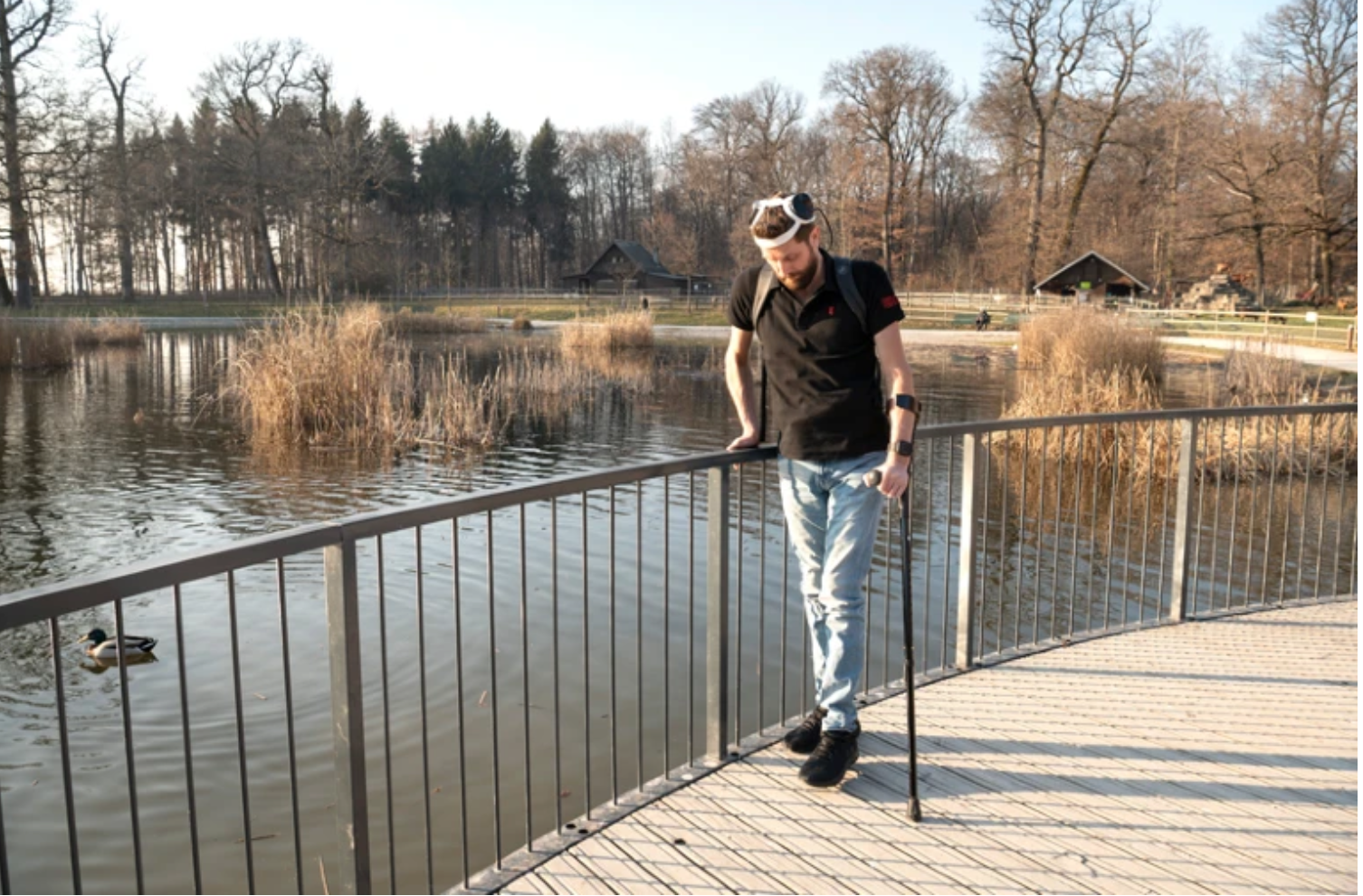EPFL professor Grégoire Courtine has created a “digital bridge” which has allowed a man whose spinal cord damage left him with paraplegia, to walk.
The brain–spine interface builds on previous work, which combined intensive training and a lower spine stimulation implant. Gert-Jan Oskam participated in this trial, but stopped improving after three years. The new system pairs the existing implant with two disc-shaped skull implants, with two 64-electrode grids resting against the membrane covering the brain.
When Oskam thinks about walking, the skull implants detect electrical activity in the cortex, and wirelessly decode and transmit it to a computer in his backpack, activating the spinal pulse generator.
The previous device “pre-programmed stimulation” that generated robotic stepping movements. Now, Oskam has full control over the parameter of stimulation, allowing him to stop, walk, and climb stairs.
After 40 rehabilitation sessions with the brain–spine interface, Oskam regained the ability to voluntarily move his legs and feet, which was not possible with the previous implant. This suggest that the new device prompted further recovery in nerve cells that were not completely severed during his injury. Oskam can also walk short distances without the device, using crutches.
Courtine is now researching the ability of a similar device to restore arm movement.
